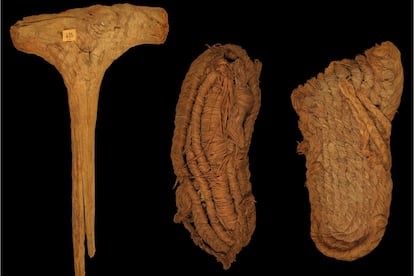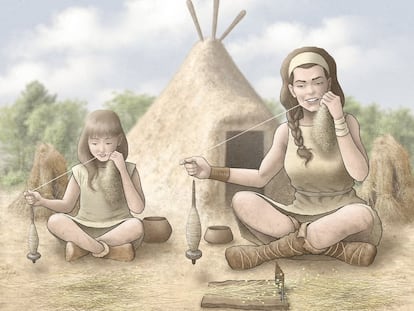Can we know for sure when an ancient textile was made?
Archaeological context and carbon-14 dating can pinpoint the age of materials created during the last 50,000 years

The answer to the question of whether we can know when an ancient fabric was made is: we can. In archaeology, there are two basic approaches to finding out when a material was produced: we can do what is called a relative chronological placement, or an absolute chronological placement. In the former, we try to establish a sequence; that is, to order the objects chronologically based on the context in which those materials have been found. An archaeological context gives us the association that exists between an object and the geological strata in which it appears, and this allows us to establish a relative chronology. For this, we rely on objects from a material culture whose temporal location have been standardized, allowing us to know to which period they belong with some degree of certainty. For this dating to be possible, the material we wish to date, in this case a fabric, must appear in a well-defined archaeological context. But this is not always possible.
When we are not able to date a material using this kind of relative location, we use absolute dating. For this method, various dating systems are used, although not all of them will work for all kinds of materials, due to their composition and chronological range that can be covered by each system. When trying to date a fabric using the absolute method, we select the system we will employ based on the raw material with which the fabric has been made, which will be composed of an organic material of vegetable or animal origin. We will also take into account our estimate of when the fabric was produced.
Without a doubt, the most exact system in this area is carbon-14 dating. The method has been used since the 1950s, and is based on the fact that life on our planet relies heavily on carbon. Throughout the course of their lives, organisms absorb carbon. Plants do so through photosynthesis and animals, through their consumption of these plants. Carbon-14 is what we call an unstable or weakly radioactive isotope, which means that its atoms decay in a regular manner. 5,730 years after the death of a living being, the amount of carbon-14 in the organism has been reduced by half, and the decay of the isotope continues at an exponential rate. If we measure the amount of carbon-14 in a fabric, we will know when the being from which the raw material was made died. But carbon-14 is not useful for dating older fabrics (nor for those that are more than 50,000 years old) because it will not give us accurate dates.
Another way of approaching the chronology of materials is to investigate the technology with which the textile was produced, and look into other factors pertaining to the raw materials with which they were made, based on information we extract from the archaeological and ethnographic record. For example, we find in Mediterranean Europe that the oldest textiles were typically made from vegetable fibers of highly local origin; in the majority of these older chronologies, linen and esparto grass. On the other hand, from the Bronze and Iron Ages onwards, handicraft production began to become more specialized. There, we see the introduction of other fibers. For example, those of animal origin such as wool start to become much more widespread. To give another example, cotton is a vegetable fiber that has great relevance in the Industrial era, and its import to Europe began during the Middle Ages.
Marta Alcolea Gracias holds a PhD in ancient sciences and is a researcher in the area of prehistory at the University of Zaragoza.
Sign up for our weekly newsletter to get more English-language news coverage from EL PAÍS USA Edition
Tu suscripción se está usando en otro dispositivo
¿Quieres añadir otro usuario a tu suscripción?
Si continúas leyendo en este dispositivo, no se podrá leer en el otro.
FlechaTu suscripción se está usando en otro dispositivo y solo puedes acceder a EL PAÍS desde un dispositivo a la vez.
Si quieres compartir tu cuenta, cambia tu suscripción a la modalidad Premium, así podrás añadir otro usuario. Cada uno accederá con su propia cuenta de email, lo que os permitirá personalizar vuestra experiencia en EL PAÍS.
¿Tienes una suscripción de empresa? Accede aquí para contratar más cuentas.
En el caso de no saber quién está usando tu cuenta, te recomendamos cambiar tu contraseña aquí.
Si decides continuar compartiendo tu cuenta, este mensaje se mostrará en tu dispositivo y en el de la otra persona que está usando tu cuenta de forma indefinida, afectando a tu experiencia de lectura. Puedes consultar aquí los términos y condiciones de la suscripción digital.










































